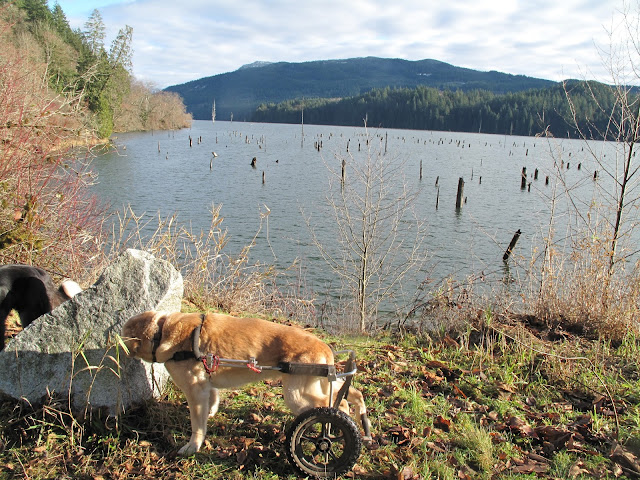Some days it is deafening around here. I have never seen so many starlings hanging around. Twice one day I walked into the garage and heard what sounded like a hissing noise and wondered if the old fridge had finally given up the ghost and some vital pipe was loosing fluid under pressure. Nope, it was the starlings chortling away outside.
The European Starlings (Sturnus vulgaris) are an invasive species that now numbers in the millions. Also in the millions are the numbers of dollars lost by the agricultural industry due to grape, cherry and berry crop damage. Around here they are the bane of the blueberry growers, so during blueberry season we are plagued with the sounds of propane cannons going off to scare the birds, or recorded distress calls. It's a huge issue. Already in the Okanagan they have trapped and destroyed many starlings, and now in this area they are talking about trying the same thing. The starlings push out the native birds, using their nests or nesting sites for their own. How did they arrive in North America? Well it seems that a certain group at the end of the 19th century released 60 starlings in Central Park in an attempt to bring all of the birds mentioned in Shakespeare's works, to North America. Never was fond of that Shakespeare guy....
Large flocks of starlings are called murmurations. I wonder who came up with that name. While the starlings are basically rats with wings, when they are flying (mumurating?), they make some amazing shapes.
Here are some examples.
This video below was taken at our place. The starlings are in the field next door. Not as impressive as the videos above, but fascinating all the same. The starlings practice what is called 'roller feeding'. The birds at the back of the flock are constantly moving to the front to new ground. They poke their beaks into the ground in hopes of grabbing something edible. It's like a massive organism slowly moving along. The birds you hear in the video are ones behind me up in the trees, the ones on the ground are too busy trying to eat.
This is one of the things I love about blogging. I start to post about something, and then I end up Googling it, and learn all sorts of fascinating information that I didn't know before. How long I retain that info is another story. Did you know that starlings can imitate voices and sounds? Saw videos of that too:)
Here's what a cow pie looks like after the starlings have been by. Hard to see, but the ground is riddled with the same kind of holes. Aeration by starlings.
And to give another bird a moment in the spotlight, we've had some visits from redwing blackbirds. I love their song when they are perched atop the marsh grasses. It was interesting, when the bird on top of the feeder tried to fly down and join in, the other three all expanded the red patches on their wings to about four times the size. Warning it off and staking a claim to 'their' territory I guess.























































